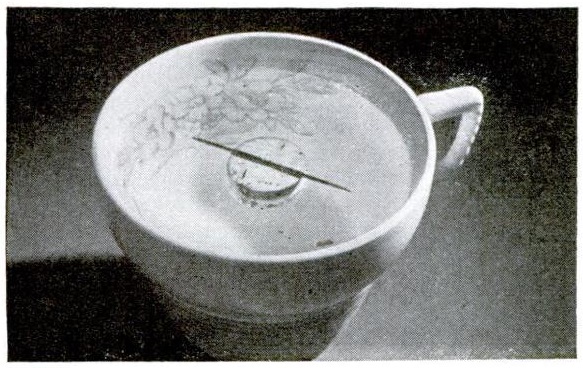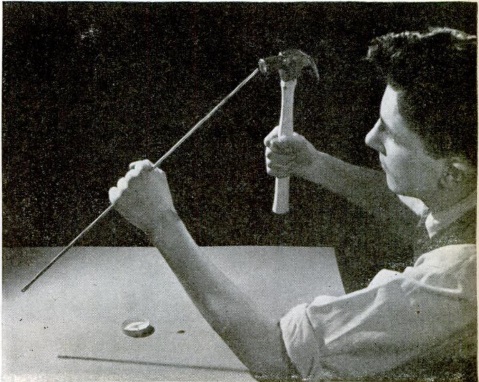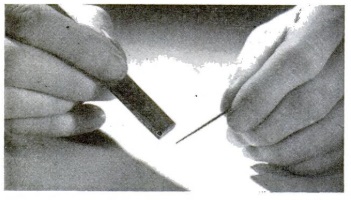 Seventy-five years ago this month, the August 1944 issue of Popular Science showed a number of simple science experiments relating to the Earth’s magnetic field. For students looking for a simple science fair experiment, these will prove most adequate. The two shown on this page answer the question, “does the Earth have a magnetic field?” It turns out that yes, yes it does.
Seventy-five years ago this month, the August 1944 issue of Popular Science showed a number of simple science experiments relating to the Earth’s magnetic field. For students looking for a simple science fair experiment, these will prove most adequate. The two shown on this page answer the question, “does the Earth have a magnetic field?” It turns out that yes, yes it does.
The first experiment produces the compass shown above that is, as the magazine puts it, as good as the best that was known for centuries. All you need is a sewing needle, a magnet, a cork, and a cup or glass (non-metallic) of water. You magnetize the needle by stroking it over the south pole of the magnet, starting at the eye and ending at the point.
If you get that mixed up, it doesn’t really matter, as one end will point north, although it might not be the pointy end. Either way, you’ve proven that the Earth has a magnetic field.
 The other experiment, shown at left, uses the Earth’s magnetic field to magnetize an iron rod. You hold it so that it’s pointing north, and to maximize the magnetic field, you angle it down toward the ground. Tap the upper end with a hammer, and the atoms will align with the magnetic field. You can test this by bringing an end near a compass, either the one you made yourself, or one you bought.
The other experiment, shown at left, uses the Earth’s magnetic field to magnetize an iron rod. You hold it so that it’s pointing north, and to maximize the magnetic field, you angle it down toward the ground. Tap the upper end with a hammer, and the atoms will align with the magnetic field. You can test this by bringing an end near a compass, either the one you made yourself, or one you bought.
You probably have most of the supplies you need for these experiments around the house, or they are available locally. The links above are to Amazon. The links are affiliate links, meaning that this site receives a small commission if you order after clicking on them.

